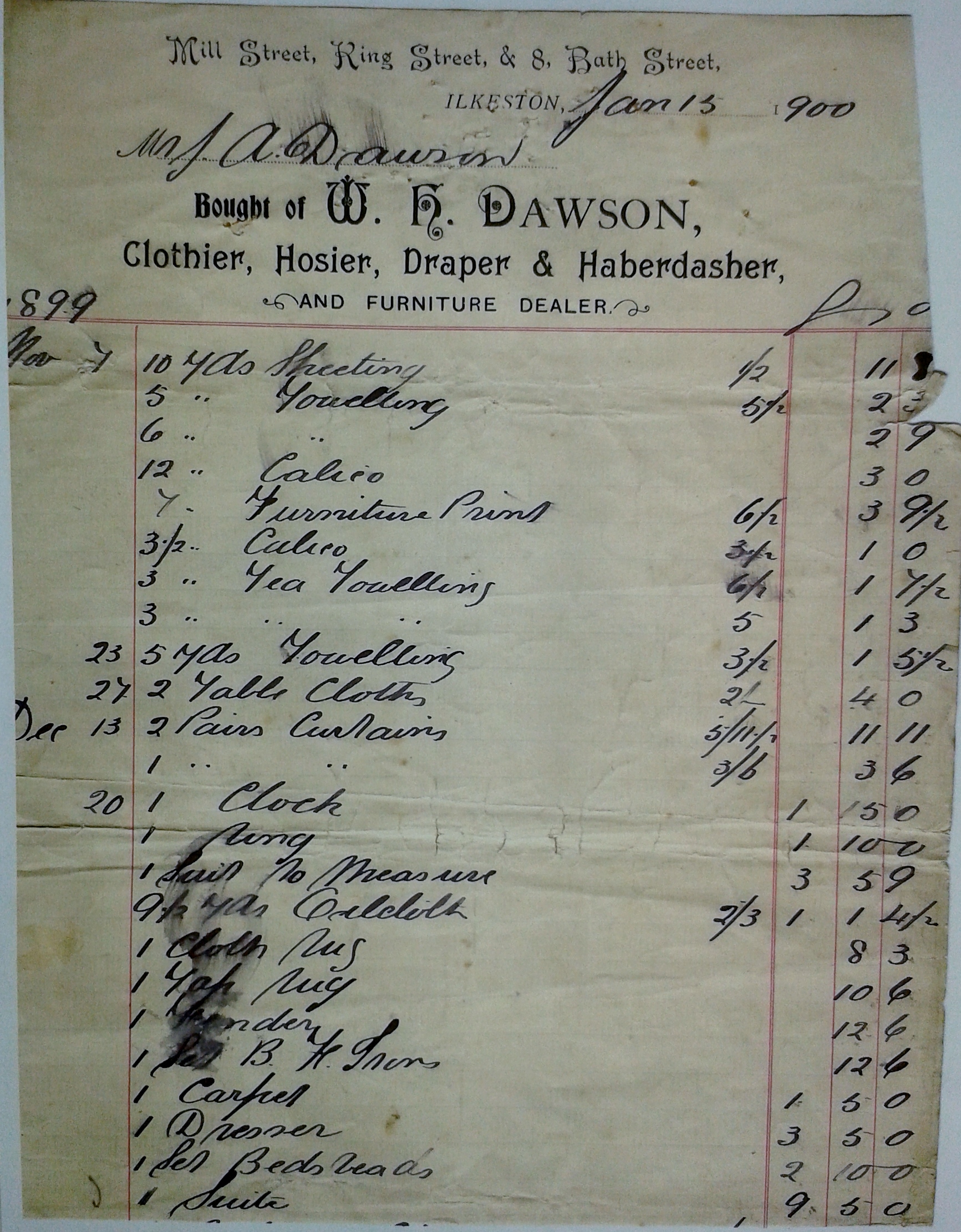The eldest child of William and Maria Dawson was William Henry, born in Ilkeston on January 8th 1868.
In 1890, at the Primitive Methodist Chapel in Bath Street, he married Harriet Riley, daughter of miner Ephraim and Mary Ann (nee Smith) of Heanor Road. The couple then made their home in Mill Street before moving into Lower King Street. There, on the 1901 Census, Harriet is described as a ‘draper and milliner’.
Was this the source of this invoice? It appears that at the end of 1899 William Henry had supplied his younger brother John Arthur with an extensive collection of household fabrics, some furniture and various sundries … very shortly after John Arthur’s marriage and his move into his ‘new’ premises at John Street. (see next section)
Into the next century and like his father, William Henry was trading as a timber merchant with premises in North Street .. and then .. !!
“My aunt (Gladys May Dawson) .. told me that William Henry built the houses on Drummond Road”.
These would include Number 19, William Henry’s home in later life and where he died in 1949.
Who’s next? … William Henry’s brother, John Arthur ….


